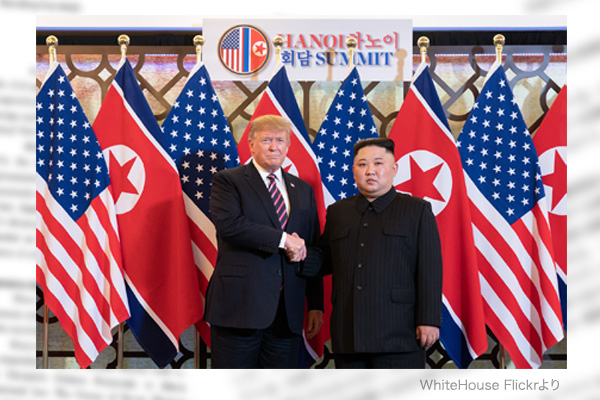The advent of the second Trump administration in the United States could be a chance for Japan to rescue abductees in North Korea.
During his first presidential term, Donald Trump energetically tackled North Korea’s abduction of Japanese citizens. In a 2017 speech at the United Nations, he condemned North Korea for abducting “a 13-year-old girl,” referring to the abduction of Megumi Yokota. Trump had two lengthy meetings with families of the Japanese abductees, listening to their pleading. He sent an autograph reply to a letter given at one of the meetings to him by Akihiro Arimoto, the father of abductee Keiko Arimoto. Late former Japanese Prime Minister Shinzo Abe told me: “Golfing together, you can talk to Trump for a long time. When I first played golf with him, I kept talking about the abduction in the cart.”
Trump raised the issue with Kim three times
Trump held two summits with North Korean top leader Kim Jong Un in 2018 and 2019. During the talks, Trump raised the abduction issue three times. During the Hanoi summit in February 2019, Trump took up the issue at a tete-a-tete meeting, but Kim changed the subject. At a subsequent small group dinner, Trump raised it again. Then, Kim gave a “meaningful answer,” said Matthew Pottinger, then senior director for Asia at the National Security Council, in a meeting with me and representatives of the abductee families association when we visited the White House in May 2019.
On May 5, 2019, Kyodo News reported Japanese government officials as saying that Kim told Trump at the time that he was aware of the abduction issue as a pending problem between Japan and North Korea and he would meet with Abe at some stage.
Trump did not address the abduction issue solely out of friendship with Abe or anger over terrorist act of abductions. There was the perspective of the U.S. national interest. At the time, North Korea frequently conducted nuclear tests and missile launches, being on the verge of having a nuclear missile capable of striking the U.S. mainland. The Trump administration was even ready to take military action to have the development stopped. The U.S.-North Korea summit was the result of the pressure.
In Hanoi, Trump demanded total denuclearization of North Korea and persuaded Kim that his country could become affluent in exchange for the denuclearization. However, Trump also made clear that the U.S. would not provide economic assistance even when it lifts sanctions. Trump persuaded Kim to meet with Abe because Japan would provide economic assistance on condition that the abduction issue is resolved. Kim responded that he would meet with Abe.
At a morning meeting on the second day of the summit, however, Kim refused to dismantle a uranium enrichment facility in Kangson, Nampo, for which U.S. intelligence agencies had credible evidence, leading the negotiations to break down at the last minute.
Progress depends on Japan’s diplomatic efforts
In September this year, North Korea made public its previously secret Kangson uranium enrichment facility through its state-run media. This means Kim sent a message to Trump that he was willing to have a summit with him as he would dismantle the Kangson facility, which he refused to do in Hanoi.
A U.S.-North Korea summit is likely to be held soon after the inauguration of the second Trump administration. In addition to the dismantlement of Yongbyon nuclear facilities and the suspension of nuclear tests that he promised in Hanoi, Kim may offer the dismantlement of the Kangson uranium enrichment facility and the abandonment of intercontinental ballistic missiles. Whether or not Trump will press Kim again to resolve the abduction issue will depend on Japanese diplomatic efforts.
Tsutomu Nishioka is a senior fellow and a Planning Committee member at the Japan Institute for National Fundamentals and a specially appointed professor at Reitaku University. He covers South and North Koreas.


